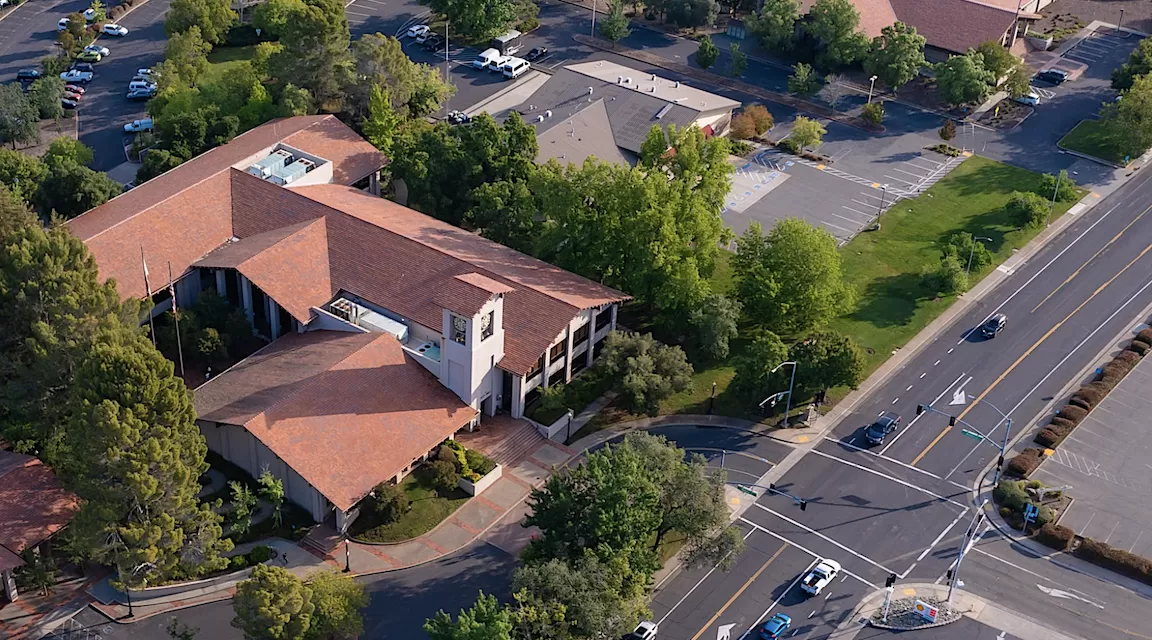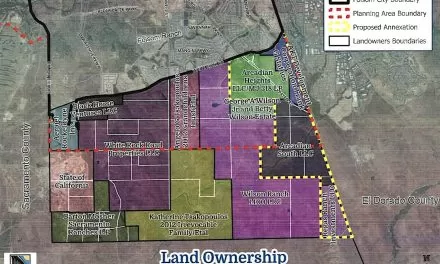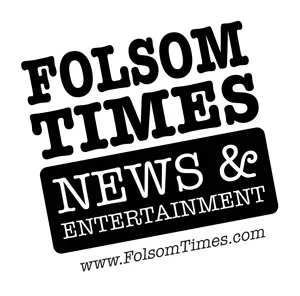Over the past several months, Folsom residents and businesses owners alike have been hearing about how the City of Folsom will be facing financial challenges in the future. A five-year forecast projects that a structural deficit will grow as the cost of providing city services outpaces revenue growth, particularly in terms of sales tax revenue.
While the Folsom City Council will be reviewing and weighing different options to address the structural deficit, they know many have concerns and questions. In an effort to connect with the community, the city published a series of Frequently Asked Questions (FAQ), to assist with some of the commonly asked questions as discussion of this topic continues. These common questions, and answers are as follows, in their entirely as released by the city staff:
What fiscal challenges is the City of Folsom currently facing?
While the City of Folsom maintains a stable financial status, an Aa2 credit rating, and reserves in the rainy-day fund, upcoming fiscal challenges are anticipated.
The City faces mounting infrastructure and building maintenance needs that lack a dedicated funding source. There is an estimated $20 million annual shortfall in funding for infrastructure improvements, park and facility repairs, equipment maintenance and replacements, trail maintenance and repairs, and staffing needs.
The five-year forecast predicts this structural deficit will grow as the cost of providing services outpaces revenue growth. A multimillion-dollar annual shortfall is projected by 2026.
Please provide specific examples of the financial challenges faced by the City.
Estimated at $20 million annually, a substantial backlog of unfunded or underfunded needs exists that the City has continually deferred, with this year’s list only adding to the burden. Deferred needs persist and accumulate, with the associated costs growing over time.
- Staffing. In the current Budget year, department heads submitted approximately $15 million in General Fund requests and sought approval for 29 positions. Their proposals were notably conservative. However, the City could only accommodate approximately $1.99 million in requests, which includes $697,000 in capital costs covered by other funds. Just four positions were added to the City’s payroll. Despite repeated appeals in the Budget, certain positions deemed essential could not be added. These are not merely desirable roles, but rather positions imperative to City operations.
- Lack of reserve funds. The absence of reserve funds for individual departments or functions is a glaring concern. There is a failure to set aside funds for anticipated future needs such as information technology, facility maintenance, parks upkeep, or facilities expansion. This shortfall extends to lacking provisions for ambitious projects or innovative initiatives in economic development or community enhancement.
- Lack of funds for emergency expenditures. The City’s financial constraints leave the organization ill-equipped to handle unforeseen circumstances. City administration regularly finds itself reallocating resources and, more often than not, having to decline non-emergency fixes.
- Declining Infrastructure. The wear and tear on once state-of-the-art facilities, parks, and trails is evident, demanding significant maintenance efforts. Yet, there are minimal funds available to address the myriad needs, exemplified by an iconic park, built three decades ago, requiring a costly replacement of its playground equipment. Facility needs across the City Hall campus are postponed, with the original HVAC system only now being replaced after frequent breakdowns, necessitating borrowing from another fund to fund the project.
How does the City plan to address these budgetary challenges?
Addressing these budgetary challenges will require pursuing one or more of the following strategies: identifying a supplementary, sustained, and consistent revenue stream; implementing targeted budget reductions; or implementing a blend of both approaches.
Why was maintaining the City’s assets so challenging?
Unfortunately, the impact of the Great Recession significantly hindered the City’s efforts to maintain its assets and infrastructure. Historically, the City experienced a substantial shortfall in property tax revenue, amounting to at least $7.4 million. Additionally, ongoing losses ensued from the reassessment of property values during that period. The repercussions extended to sales tax revenue, resulting in a staggering loss of approximately $27.3 million.
Despite the City’s well-intentioned planning, the economic constraints prevented the City from addressing essential needs. Over time, as assets aged, the challenges escalated. The lost revenue during the recession exacerbated the City’s current struggles with revenue growth, compounding the difficulties faced in meeting the evolving needs of today.
Why can’t the City explore avenues to reduce expenses or enhance efficiency?
Since the Great Recession, the City has been taking steps to cut costs.
As a service organization, the City’s biggest expense is employee costs. In fact, the City has about 38% fewer employees per capita than in 2008.
The City has implemented various cost-cutting measures, including reducing staffing levels, using part-time employees, increasing employee contributions, and restructuring pay incentives. However, these measures are not sufficient without additional revenue. Examples of cost-cutting measures include:
Significantly reduced staffing levels (remained flat for the past 4 years) – all departments doing more with less.
- Used part-time or contract employees when feasible.
- Increased employee contributions towards retirement (employees pay their entire share).
- Eliminated retiree health benefits for new employees.
- Increased employee contributions to health benefits.
- Restructured education incentive pay for costs savings.
- Extended the number of steps in pay ranges to have smaller annual pay increases.
- Eliminated longevity pay for new employees.
- Capped accrued leaves balances and cash out amounts.
The City is at a point now where budget cuts will be increasingly noticeable in the community, and difficult decisions must be made. The standards and services the community has come to expect are starting to decrease and decline.
A significant portion of the City’s General Fund is allocated to salaries, wages, and benefits. With these costs on the rise, maintaining the City’s fiscal position requires difficult choices. The City may need to cut services, trim its workforce, adjust compensation packages, or a combination of these measures.
Sustaining competitiveness in employee compensation within the region is already a formidable task, and it’s anticipated to become even more demanding. Recent negotiations with labor groups included benchmarks from neighboring cities with local sales tax measures, creating a challenging standard for total compensation. The City of Folsom is unlikely to match the compensation packages of cities with significantly greater financial resources. This limitation may adversely impact the City’s ability to attract and retain high-quality candidates, particularly evident in certain job classifications.
Beyond salaries, the escalating cost of operations poses additional challenges. Some bids are coming in at double the anticipated amounts, and the City lacks the financial cushion to absorb such increases.
Why does the City have a revenue shortage with the new influx of housing? Isn’t the City receiving substantial property tax revenue?
There may be some misunderstandings and misconceptions surrounding this particular revenue source. California’s property tax rate stands at approximately 1%, with Folsom receiving only 20% of that amount. The total assessed value of all property in Folsom is estimated to be $18.5 billion, generating an annual property tax revenue of about $185 million. Folsom’s share of this revenue is approximately $37 million.
To provide a tangible example, a home valued at $450,000 would contribute $4,500 in property tax annually, with Folsom receiving $900 for General Fund operations.
It’s important to note a couple of key points:
- The City has limited influence over property tax growth, as trends are projected to remain steady at around 5% per year.
- Proposition 13, passed by voters, stipulates that assessed property values only increase by the change in the Consumer Price Index or 2%, whichever is less, unless the property is sold. It’s important to understand that a Zillow estimate of $1,000,000 for a Folsom home doesn’t necessarily translate to property tax collection at a million-dollar assessment level, due to the constraints imposed by Proposition 13.
Does the development south of Highway 50 result in enough revenue to cover the projected deficit?
Revenue generated from this development comes with accompanying costs for services and infrastructure maintenance. Some of the generated income is shared with Sacramento County, as per an annexation cost-sharing agreement. In essence, the impact on the General Fund remains neutral.
It’s understandable that there may be a perception of significant financial gains, especially considering the homes south of Highway 50 in Folsom Ranch and their selling prices. However, these increases in property tax revenue were anticipated and incorporated into the City’s planning and projections from the outset. Consequently, this balanced approach results in a zero-net effect on the General Fund.
How is General Fund spending allocated?
The largest portion of the General Fund, 50%, is allocated to Police and Fire services, emphasizing the City’s prioritization of public safety. The rest is distributed among various functions that contribute to the overall well-being of the community.
What are the major expenditure categories within the General Fund?
Approximately 72% of the General Fund is dedicated to salaries, wages, and benefits, reflecting the significant role of personnel in providing services to the community.
What are the key revenue sources for the City’s General Fund?
The General Fund primarily relies on property tax and sales tax, which together make up about 61% of the total General Fund revenue. Other sources include:
- Transit Occupancy Tax: A tax levied on individuals who stay temporarily in lodging establishments such as hotels, motels, inns, or other accommodations.
- Charges for Services: Revenue the City receives for providing services like engineering inspections, plan and map checks, administrative fees, fire services, and recreation programs.
- Transfers-In Revenue: The allocation of departmental costs incurred by the General Fund to all funds that receive benefit from the services that the General Fund departments provide.
- Grants: Funds provided by external entities, such as government agencies, foundations, or organizations, to support specific projects, programs, or initiatives.
- Other: Reimbursements, third party recoveries, donations, gifts, sales of publications, and other miscellaneous items.
What are the impacts of the current slowed sales tax growth?
Sales tax is a critical revenue source for the City, but its growth rate has slowed due to changing consumer trends and increased costs.
The growth rate of the City’s sales tax averaged approximately 6% annually from Fiscal Year 2010 through Fiscal Year 2018. However, since then, it has decelerated significantly to a more modest growth rate of around 2.3% per year.
The slowed sales tax growth creates a structural deficit, making it fiscally unsustainable to maintain current services beyond Fiscal Year 2024-25 without additional revenue.
Is the City of Folsom considering a local sales tax measure?
The City Council has discussed a possible local sales tax measure to address a projected structural deficit and growing financial challenges but, to date, has yet to reach a consensus direction to staff to move ahead. The City Council will again discuss this issue at a City Council Meeting in March 2024.
In addition, a citizens group is proposing a 1% special sales tax from which the revenue would remain in Folsom and be deposited into a special City account separate from the general fund for the City to be used only for specific purposes, including:
- Police and Crime Reduction
- Fire, Rescue, and Emergency Medical Services
- Parks, Recreation Facilities, and Trails
- Traffic Mitigation and Environmental Water Quality
- Community Enhancement and Economic Development
- Major Capital Improvement Projects
For details about the Folsom Residents Public Safety and Quality of Life Measure, including the City Attorney’s Ballot Title and Summary, visit www.folsom.ca.us/elections.
What is the City of Folsom’s sales tax rate?
Folsom’s cumulative tax rate on retail sales currently comprises the base rate of 7.25% of the purchase price, with an additional 0.5% designated for Measure A transportation uses, resulting in a total of 7.75% of the purchase price.
However, it is important to note that the City of Folsom does not directly receive the entire 7.75% from each sale conducted within its jurisdiction. Instead, the generated tax revenue is distributed among various entities, including the State of California, the County of Sacramento, the City of Folsom, and other public agencies.
Folsom’s specific share in this tax revenue amounts to 1.0% of the purchase price. This implies that for a one-dollar purchase made in Folsom, the City of Folsom only receives 1%, not the full 7.75% from that transaction.
How much would a sales tax measure generate for the City of Folsom?
A 0.5% local sales tax would initially generate approximately $14.5 million per year, while a 1% local sales tax would initially generate approximately $29 million per year until and unless repealed by voters.
What is the difference between a general tax and a special tax?
A special tax refers to a tax imposed for a designated purpose, with its revenue legally committed to services like public safety, parks, recreational facilities, maintenance, transportation infrastructure, and economic development. Approval for special taxes levied by local governments necessitates a two-thirds (66.67%) majority vote at the ballot box.
The revenue generated from a special tax is exclusively allocated to the specific purposes outlined in the ballot measure. Any deviation from these designated uses would be deemed illegal, as it would contradict the expressed will of the voters. For instance, if a special tax is earmarked for funding activities A, B, C, and D according to the ballot language, reallocating any excess funds to a different need, such as Q, in a given year would be impermissible.
A special tax directly benefits the functions and departments specified in the ballot measure, leaving other functions and departments reliant on non-special tax revenues without constraints. This allocation framework may result in a notable shift in the traditional distribution of the City’s resources.
Unless expressly permitted in the special tax measure, the revenue from the special tax cannot be utilized to address the City’s ongoing fiscal challenges, including funding reserves and ensuring competitive salaries for current and future City employees in labor negotiations.
It should be noted that if a special tax is presented as a community initiative, it would qualify for a lower voter threshold of 50% plus one.
Have voters in neighboring cities increased sales tax rates?
By way of comparison with jurisdictional neighbors within Sacramento County, the cities of Elk Grove (8.75%), Galt (9.25%), Rancho Cordova (8.75%), and Sacramento (8.75%) all have at least a 1% local sales tax in place. The City of Citrus Heights remains at 7.75% alongside Folsom.
- Galt passed a 0.5% special tax for public safety needs in 2008, and then 1.0% general tax in 2022.
- Elk Grove passed a 1.0% general tax in 2022.
- Rancho Cordova passed a 0.5% general tax in 2014, and then another .5% general tax in 2020.
- Sacramento passed a 1.0% general tax in 2018.
How can residents get involved in the decision-making process?
The City encourages community engagement in the decision-making process. Residents can stay informed through public meetings, workshops, and other outreach efforts. The City values input from the community to make informed decisions about potential tax measures. Stay informed at www.folsom.ca.us.





